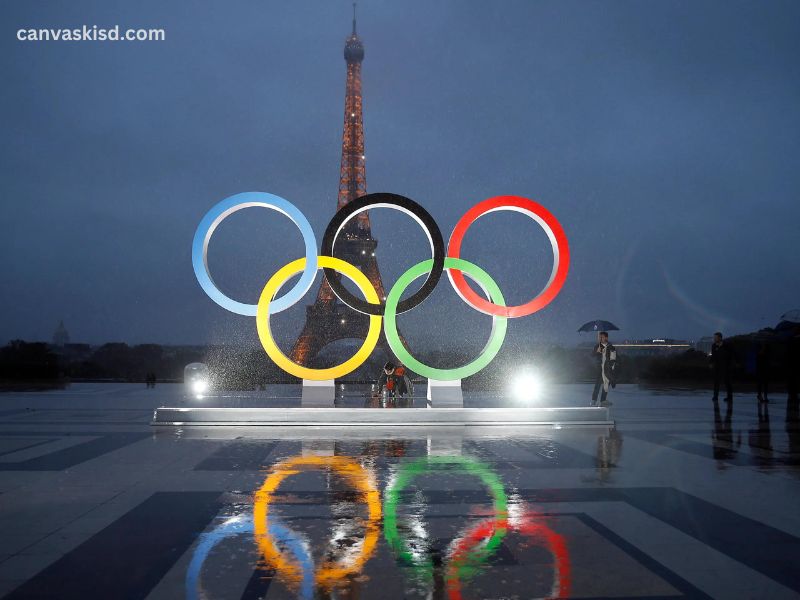The Summer Olympics, officially known as the Games of the Olympiad, is a global multi-sport event that takes place every four years. First held in ancient Greece, the modern iteration was revived in 1896 by Pierre de Coubertin, and since then, it has evolved into one of the most significant international sporting events. The Summer Olympics showcase a wide range of sports, each bringing its own unique excitement and challenge. This article will explore the diverse sports featured in the Summer Olympics, examining their origins, evolution, and significance in the global sporting landscape.
1. Athletics
Athletics, commonly referred to as track and field, is often considered the cornerstone of the Summer Olympics. It includes a variety of events such as sprints, middle and long-distance races, hurdles, relays, and field events like the long jump, high jump, pole vault, shot put, discus, hammer throw, and javelin. Athletics has a rich history, with its origins dating back to the ancient Olympic Games in Greece. The modern athletics program showcases the pinnacle of human speed, endurance, and strength.
2. Swimming
Swimming is another central sport in the Summer Olympics, featuring individual and team events in various styles, including freestyle, backstroke, breaststroke, and butterfly. There are also medley events where swimmers perform a combination of strokes. The sport’s history at the Olympics dates back to the first modern Games in 1896, and it has since become one of the most-watched events. Notable swimmers like Michael Phelps and Katie Ledecky have made their mark with extraordinary performances.
3. Gymnastics
Gymnastics is a sport that emphasizes strength, flexibility, balance, and grace. The Olympic gymnastics program includes artistic gymnastics, rhythmic gymnastics, and trampoline. Artistic gymnastics features events such as the floor exercise, pommel horse, rings, vault, parallel bars, and high bar for men, and floor exercise, balance beam, uneven bars, and vault for women. Rhythmic gymnastics combines elements of ballet, dance, and apparatus manipulation, while trampoline gymnastics showcases high-flying acrobatic moves.
4. Basketball
Basketball made its Olympic debut in 1936 and has since grown into one of the most popular sports in the Summer Games. The sport features both men’s and women’s tournaments, with teams from around the world competing for gold. The Olympic basketball format involves a series of preliminary rounds leading to knockout stages, culminating in the medal matches. Basketball legends such as Michael Jordan, LeBron James, and Lisa Leslie have become icons of the sport.
5. Soccer
Soccer, known as football in most parts of the world, is a major attraction at the Summer Olympics. While it is not as prestigious as the FIFA World Cup, the Olympic soccer tournament provides a platform for emerging talent and national pride. Both men’s and women’s soccer tournaments feature teams from various countries competing in a format similar to club competitions, with the top teams advancing to the knockout stages.
6. Tennis
Tennis was first included in the Olympics in 1896 but was later removed and reintroduced in 1988. The sport features singles and doubles events for both men and women, with a mixed doubles competition also added. The Olympic tennis tournament provides a unique opportunity for players to win a prestigious medal alongside their regular tour successes. The likes of Serena Williams, Rafael Nadal, and Andy Murray have all made significant contributions to Olympic tennis.
7. Rowing
Rowing is a demanding sport that involves teams or individuals racing boats on a straight course. The Olympic rowing program includes a variety of boat classes, including single sculls, double sculls, quadruple sculls, eights, and others. The sport has been part of the Olympics since 1900 and is known for its combination of strength, endurance, and precise technique. Rowing has produced numerous Olympic champions and world record holders.
8. Fencing
Fencing is a sport that combines speed, agility, and strategy. It features three main disciplines: foil, épée, and sabre, each with its own set of rules and techniques. The Olympic fencing tournament includes individual and team events in each discipline. The sport has been included in the Olympics since 1896 and is known for its emphasis on precision and tactical prowess.
9. Wrestling
Wrestling is one of the oldest sports in Olympic history, with origins dating back to ancient Greece. The modern Olympic wrestling program includes two styles: Greco-Roman and freestyle. Greco-Roman wrestling emphasizes holds above the waist, while freestyle allows holds and attacks on the entire body. Wrestling is known for its physicality and technique, with athletes competing in various weight classes.
10. Boxing
Boxing has been part of the Olympic Games since 1904, and it features bouts in various weight classes for both men and women. The sport involves a combination of skill, speed, and strategy, with competitors aiming to outscore or knock out their opponents. Olympic boxing has seen many legendary fighters, and it provides a stage for both amateur and professional boxers to showcase their talent.
11. Cycling
Cycling at the Olympics includes several disciplines: road cycling, track cycling, mountain biking, and BMX. Road cycling features individual time trials and mass start races, while track cycling involves events like the sprint, pursuit, and keirin. Mountain biking is a cross-country race on rugged terrain, and BMX includes both racing and freestyle events. Cycling has been part of the Olympics since 1896 and continues to attract large audiences.
12. Shooting
Shooting sports in the Olympics include rifle, pistol, and shotgun events. Competitors aim to hit targets with precision and consistency, with various distances and formats depending on the event. The Olympic shooting program has a long history, dating back to the first modern Games. The sport requires a high level of concentration and skill, with shooters competing in individual and team events.
13. Archery
Archery is a sport that involves shooting arrows at a target from a set distance. The Olympic archery program includes individual and team events for both men and women. Archery has been part of the Olympics since 1900, with a focus on precision and control. The sport’s rich history and technical demands make it a captivating part of the Summer Games.
14. Judo
Judo is a martial art and combat sport that originated in Japan. It involves throws, holds, and submissions, with competitors aiming to throw or pin their opponents. The Olympic judo program includes various weight classes for both men and women. Judo has been an Olympic sport since 1964 and is known for its emphasis on technique and sportsmanship.
15. Taekwondo
Taekwondo is a Korean martial art that focuses on high, fast kicks and jumping and spinning kicks. The Olympic taekwondo program includes sparring events in different weight classes for both men and women. The sport has been part of the Olympics since 2000 and is celebrated for its dynamic and striking techniques.
16. Modern Pentathlon
Modern pentathlon is a unique multi-sport event that combines five disciplines: fencing, freestyle swimming, equestrian show jumping, and a combined event of laser-run (a combination of running and shooting). The sport was introduced in the Olympics in 1912 and is designed to test a wide range of athletic skills. Modern pentathlon requires versatility and adaptability, making it a fascinating event to watch.
17. Triathlon
Triathlon is a multi-discipline sport that includes swimming, cycling, and running. The Olympic triathlon features a standard distance of 1.5 kilometers of swimming, 40 kilometers of cycling, and 10 kilometers of running. The sport has been part of the Olympics since 2000 and is known for its demanding endurance and transition challenges.
18. Equestrian
Equestrian events at the Olympics include dressage, show jumping, and eventing. Dressage is a form of horse training that involves precise movements and patterns, show jumping requires horses to clear a series of obstacles, and eventing combines cross-country, show jumping, and dressage. Equestrian sports have been part of the Olympics since 1912 and showcase the partnership between horse and rider.
19. Water Polo
Water polo is a team sport played in a swimming pool, where two teams of seven players each compete to score goals by throwing a ball into the opposing team’s net. The game combines elements of swimming, ball handling, and strategy. Water polo has been part of the Olympics since 1900 and is known for its intensity and physicality.
20. Volleyball
Volleyball at the Olympics includes both indoor and beach volleyball. Indoor volleyball features teams of six players each competing on a court divided by a net, while beach volleyball is played with teams of two on a sand court. Volleyball has been part of the Olympics since 1964, with beach volleyball added in 1996. Both forms of the sport are popular for their fast pace and team dynamics.
21. Handball
Handball is a team sport where two teams of seven players each try to score goals by throwing a ball into the opposing team’s net. The game combines elements of basketball, soccer, and water polo, with a focus on fast-paced play and teamwork. Handball has been part of the Olympics since 1936 and has grown in popularity over the years.
22. Softball/Baseball
Softball and baseball have had varying roles in the Olympics. Softball was included in the Olympics from 1996 to 2008, while baseball was part of the Games from 1992 to 2008. Both sports have passionate followings and feature competitive tournaments. Softball was reintroduced in 2020, and baseball may return in future Games, reflecting the ongoing evolution of Olympic sports.
23. Skateboarding
Skateboarding made its Olympic debut in 2020, reflecting its growing popularity and cultural impact. The sport features events such as street skating and park skating, showcasing tricks, flips, and technical skills. Skateboarding’s inclusion in the Olympics represents a shift towards incorporating more urban and youth-oriented sports.
24. Surfing
Surfing also made its Olympic debut in 2020, bringing its thrilling and dynamic waves to the Games. The sport features athletes riding waves on surfboards, with judges scoring based on difficulty, execution, and overall impression. Surfing’s inclusion highlights the Olympics’ commitment to embracing diverse and global sports.
25. Climbing
Sport climbing joined the Olympics in 2020, featuring disciplines such as lead climbing, speed climbing, and bouldering. Climbers compete in various events that test their speed, strength, and technique on artificial climbing walls. The inclusion of climbing reflects the Olympic movement’s interest in adding more adventurous and physically demanding sports.
26. Breakdancing
Breakdancing, or breaking, was introduced as an Olympic sport in 2020. It is a form of street dance that includes acrobatic moves, spins, and freezes. The sport’s inclusion in the Olympics represents a celebration of dance culture and its growing influence on the global stage.
Conclusion
The Summer Olympics are a celebration of athletic excellence, featuring a diverse array of sports that showcase different skills, cultures, and traditions. From the classic events of athletics and swimming to the modern additions of skateboarding and surfing, the Olympics provide a platform for athletes from around the world to compete and inspire. Each sport brings its own unique excitement and challenge, contributing to the rich tapestry of the Summer Games. As the Olympics continue to evolve, they will undoubtedly continue to include a wide range of sports that reflect the changing interests and passions of athletes and fans alike.



